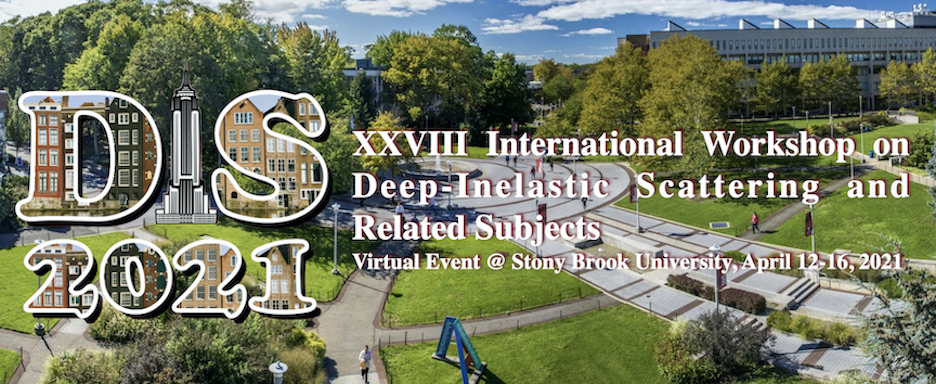Speaker
Description
Exclusive scattering processes are especially powerful probes of the proton and nuclear structure at small $x$. In particular, the possibility to measure the total momentum transfer allows for the extraction of the spatial distribution of small-$x$ partons, including their event-by-event fluctuations[1].
More detailed information about the target structure can be obtained by studying more differential observables. In our recent work [2] presented in this talk, we study coherent diffractive photon and vector meson production in electron-proton and electron-nucleus collisions within the Color Glass Condensate effective field theory focusing on the azimuthal angle correlations between the outgoing lepton and the produced vector particle. We show that the azimuthal angle correlations are sensitive to non-trivial spatial correlations in the gluon distribution of the target, and perform explicit calculations using spatially dependent McLerran-Venugopalan initial color charge configurations coupled to the numerical solution of small $x$ JIMWLK evolution equations. We compute the cross-section differentially in $Q^2$ and $|t|$ and find sizeable anisotropies in the electron-photon and electron-J/ψ azimuthal correlations ($v_{1,2}≈2−10\%$) in electron-proton collisions for the kinematics of the future Electron-Ion Collider. In electron-gold collisions these modulations are found to be significantly smaller ($v_{1,2}<0.1\%$). We also compute incoherent diffractive production where we find that the azimuthal correlations are sensitive to fluctuations of the gluon distribution in the target.
[1] See e.g. H. Mäntysaari, Rept.Prog.Phys. 83 (2020) 8, 082201, arXiv:2001.10705 [hep-ph] for a review
[2] H.Mäntysaari, K. Roy, F. Salazar, B. Schenke, arXiv:2011.02464 [hep-ph]

